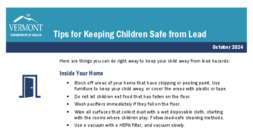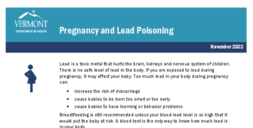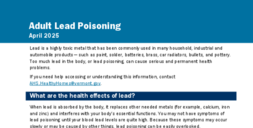This information is for health care professionals. The Healthy Homes Lead Poisoning Prevention Program works with you to ensure that all 1- and 2-year-old children are tested for lead. Vermont law requires that all children are tested for lead at 12 months and 24 months. As of September 1, 2020, health care professionals must provide a copy of What Your Child’s Lead Test Means to all parents or caregivers of children being tested for lead, regardless of the test results.
Vermont has lowered its definition of an elevated blood lead result from 5 µg/dL to any reported level. Research highlights that there is no safe level of lead and levels at and below 5 µg/dL still impair development. Therefore, any level of lead in the blood is considered elevated.
The information on this page is also available in PDF form for easy referencing or printing:




